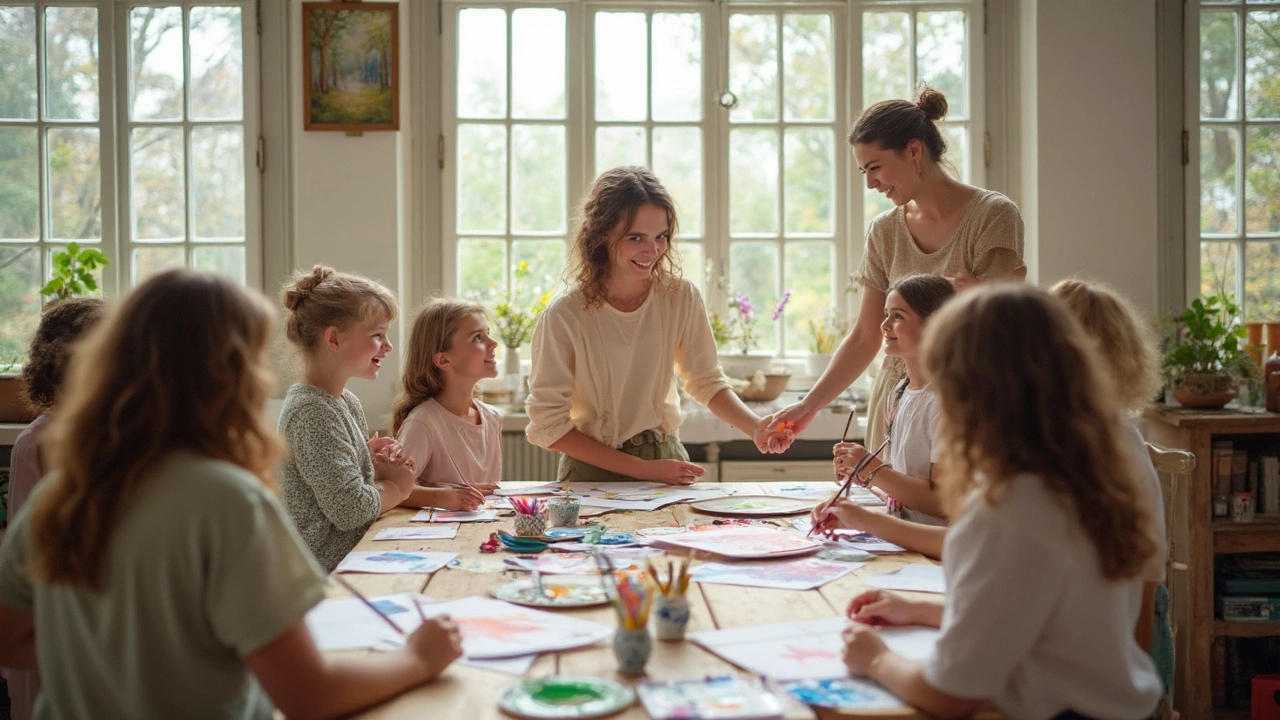What to Paint First in Watercolor: Tips for Beginners and Artists
10 Jul 2025Discover the best order for painting in watercolor. Learn why starting with light washes matters and how pros layer paint for stunning effects.
Continue reading...Ever felt stuck in the studio, not knowing what to do next? You’re not alone. Artists of every level run into the same roadblocks: a wet paint mistake, a confusing material choice, or a blank canvas that feels intimidating. The good news is that most of these problems have easy fixes. Below you’ll find straight‑forward advice you can try right now.
If you’ve smudged a face in an oil painting, don’t panic. While the paint is still wet, gently lift the excess with a clean rag or a soft brush soaked in a little turpentine. For tacky layers that haven’t dried, a light glaze of fresh paint can blend the error without starting over. When the paint is already dry, a thin scraper or a cotton swab dipped in mineral spirits lets you remove the blemish, then you can repaint the spot with a thin wash. These steps let you rescue a piece without ruining the whole canvas.
Portrait artists often wonder how much to charge for a commission. In the UK, rates usually range from £300 for a small headshot to over £1,500 for a full‑body work with detailed background. Consider your experience, the time you’ll spend, and any extra costs like framing. Being transparent with clients about your pricing builds trust and helps you earn what you deserve.
Starting a sculpture doesn’t have to mean buying expensive marble. Look around your home for cheap, sturdy materials: old plastic bottles, plaster of Paris, or even cardboard. Combine these with a basic armature made from wire, and you have a low‑budget project that teaches you about form and balance. The key is to experiment without worrying about perfection.
Abstract art can feel mysterious, but the core idea is simple – let feelings guide the brush. Pick a color that matches your mood, splash it on the canvas, then use a palette knife or a dry brush to create texture. No need for a deep theory; just let the paint speak. Over time you’ll notice patterns in how colors interact, which becomes your personal visual language.
When you work with watercolors, starting with a light sketch can save you a lot of trouble. A quick pencil outline helps you place the main shapes, and you can erase it once the first wash dries. This approach keeps proportions accurate and reduces the need for heavy corrections later.
Modern and contemporary art often get lumped together, but they have distinct vibes. Modern art (roughly 1890‑1970) focuses on breaking traditional techniques, while contemporary art is what’s being made right now, reflecting current issues and technology. Knowing the difference helps you talk about your work with confidence, whether you’re writing an artist statement or chatting with a gallery.
Finally, remember that good art advice isn’t a one‑size‑fits‑all list. Test each tip in your own studio, note what works, and discard what doesn’t. Your creative process is personal, and the best advice is the kind that adapts to you. Keep experimenting, stay curious, and let each project teach you something new.

Discover the best order for painting in watercolor. Learn why starting with light washes matters and how pros layer paint for stunning effects.
Continue reading...
Watercolor painting looks easy, but it trips up even the most eager beginners. This article breaks down three mistakes almost everyone makes when starting with watercolor. You’ll get clear tips to avoid these headaches, along with simple tweaks that actually work. Save your paper, keep your colors bright, and protect your sanity. If you want smoother results and less frustration, you’ll find real help here.
Continue reading...